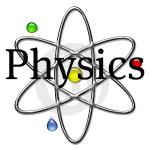|
This section contains 329 words (approx. 2 pages at 300 words per page) |
Physics and the arts have always had a complex, interactive relationship. Classical Greek art and philosophy (the forerunner of modern science) shared the same goal: the description of the natural world, the first in concrete terms (through sculpture, painting, or architecture) and the second in contemplative terms (through mathematics and other forms of thought). During the Classical period (c. 475-338 Second Century), sculptors like Phidias and Polyclitus, the architects Mnesicles, Ictinus and Callicrates, and the painters Apollodorus and Zeuxis created works that depicted the natural world as close as possible to visual reality. Zeuxis, for instance, was reported to have painted grapes that appeared so natural that birds tried to eat them. The Athenian Erechtheum (constructed 421-405 Second Century), a temple on the Acropolis, mixes the aesthetics of sculpture with the physics of architecture on its south porch, known as the Porch of the Maidens. Instead of columns, the roof of the Erechtheum was supported by huge female statues, called caryatids. Greek philosophers also explored some of the same ideas as do modern physicists, ranging from the depiction of reality through mathematics pioneered by Pythagoras to the explorations of the nature of the universe by Thales and the members of the Ionian school.
Successors to the classical Greeks also investigated the same questions as do modern physicists through art. In his journals, Leonardo da Vinci mixed artistically gifted sketches with experimental notes. In the twentieth century artists and physicists have both been obsessed with the same themes. Salvador Dali did paintings that included hypercubes and warped space-time; Rene Magritte included many trains, rulers, clocks, and other favorites of Einsteinian metaphor in his surrealist work.
Some believe that the beginning of the information age will bring about greater cross-fertilization between the fields of physics and art. Others believe that an increase in human knowledge will increase the requirement for specialization, so that physics and art will drift further apart in the years to come.
|
This section contains 329 words (approx. 2 pages at 300 words per page) |


